- Home
- Lawrence Block
Gigolo Johnny Wells Page 15
Gigolo Johnny Wells Read online
Page 15
Sometimes the memories came.
He would remember the days when he had all that money, and he would tell himself that they had not been good days, and then he would think that they must have been better than the ones he was living his way through now.
He would remember a girl named Linda, and he would picture all the things that might have been, and he would get sick once more.
The wine bottle was always there.
It was always a cure.
He always took it.
THE END
A New Afterword by the Author
MY FIRST BOOK FOR Bill Hamling’s Nightstand Books, and Andrew Shaw’s first appearance in print, was Campus Tramp. I wrote it in the summer of 1959 in my furnished room at the Hotel Rio, on West Forty-Seventh Street between Sixth and Seventh avenues. That was a fascinating block at the time, before the southward expansion of Rockefeller Center performed a sort of corporate urban renewal. In another book (also by Andrew Shaw, and published by Nightstand) I listed the restaurants and other places of business on that one block. One of the Broadway columnists designated that particular block Dream Street, and while that sobriquet may have been fastened on other parts of Times Square, I always figured the guy had it right.
There was, God knows, nothing fancy about the Rio, but it was a decent place, family owned and operated. A lot of Greek seamen stayed there when they made port in New York as well as the usual mix of up-and-comers and down-and-outers, in and out of the arts, that you’d get in a low-rent residential hotel. I only lived there for a month or two that summer, but two years later, when I was living uptown on Central Park West, I used a room at the Rio as an office.
Campus Tramp may have been Andrew Shaw’s first book, but not mine. A little more than a year earlier I’d written a lesbian novel that Crest Books would publish as Strange Are the Ways of Love. Then I wrote Carla for Harry Shorten’s new operation, Midwood Tower, and returned to Antioch College for what would be my final year of college, though I didn’t know it at the time. There was a three month stretch when I edited the college newspaper, and I gave that my full attention, but otherwise what I mostly did was drink and smoke dope and fool around with women.
And write. Harry Shorten was crazy about Carla and wanted more, so instead of reading Humphry Clinker and Roderick Random and Joseph Andrews, I was writing A Strange Kind of Love and 69 Barrow Street and Born to Be Bad. I’d gone off to college in the first place so that I could become a writer, and I was damned if I was going to let my education get in the way of my work.
When the school year ended I returned to New York and took a room at the Rio, and even as I was delivering the next Midwood book to my agent, he had an assignment for me. A new publisher, Nightstand Books, wanted a book and they’d pay seven hundred fifty dollars, which was a cut above the six hundred dollars I was getting from Shorten. Thus Campus Tramp.
And the book went over fine with Hamling, who let me know via my agent that he could use a book a month from Andrew Shaw.
A book a month. Maybe Harry Shorten would have taken a book of month from me, were I to write them that frequently, but Bill Hamling virtually insisted on it. Did it ever occur to me that I might have trouble turning out work at that rate? I honestly don’t think it ever did. The books had to be two hundred pages long, and it wasn’t that hard to produce twenty pages a day, and to do that five or six days a week. So do the math—two weeks to fulfill my obligation to Nightstand and two weeks to write the books I cared about—which probably meant crime fiction of one sort or another.
Piece of cake.
Let’s not forget there was ample frosting on that piece of cake, and it was sweet frosting indeed. You didn’t get rich writing books at seven hundred fifty dollars a pop, each of which netted you six hundred seventy-five dollars after your agent’s commission. (My agent at the time got more than his ten percent, we learned many years later. He also got a hefty packaging fee from Hamling.) You didn’t get rich but you didn’t go hungry, either, and this was at a time when big corporations were hiring college graduates for five thousand dollars a year. But corporations wouldn’t have hired me—I wasn’t a college graduate—and six hundred seventy-five dollars a month was a whole lot better than what they paid you to bag groceries.
And it left me half the month to write something else! It would be nice to report that I devoted that second half of the month to serious fiction, or at least to fiction that I was serious about, but most of the time I spent it writing the odd book for Harry Shorten, or handling some assignment my agent came up with. Psychosexual case histories under a medical pen name. A quickie ghostwriting job for the publisher of Confidential magazine, who wanted me to cut and paste a bushel full of old magazine pieces into a book. An adventure novel for Monarch Books—Fidel Castro Assassinated!
Nothing to make John Steinbeck eat his heart out.
No matter. It wasn’t long before Hamling raised his boys to one thousand dollars a book. That was too good to turn down, and it all served another important function as well. It kept me from having to figure out what I really wanted to write.
And what has any of this to do with Gigolo Johnny Wells?
Well, I’m not sure. But thinking about the book has brought those Nightstand days into focus for me. It’s hard to see the picture when you’re standing inside the frame, and it’s easier to have some perspective on the time now that half a century (half a century!) has slipped by.
I’ve often said that I don’t regret the books I wrote early on, or the time I spent writing them. I’ve always regarded those days as a paid apprenticeship. You learn how to write by writing, and that’s what I did and how I did it.
At the same time, it seems to me that I stayed too long at the fair. Under the aegis of the Scott Meredith Literary Agency, where they always took the cash and let the credit go, I accepted the assignments and went for the sure money.
The Nightstand books became part of my monthly routine, and in time the writing of them became itself routine. Each book was the work of ten writing days—or, if I buckled down and wrote forty pages a day instead of twenty, just five days work. They were spun, I’m sure, out of some unconscious synthesis of experience and imagination. I developed no end of tricks to fill pages rapidly, stacking up one-sentence paragraphs, ending chapters at the top rather than the bottom of a typed page, and letting conversations go on as long as the characters felt like nattering away at each other.
My second daughter was born in May of 1963, and I had the obstetrician’s bill to pay. That month I did an extra book for Nightstand. I wrote eighty-five pages the first day, eighty the second, and finished the book early in the afternoon of the third day. I have no idea which book it was; two days later, the names of the characters and every detail of the plot had vanished from my memory. I don’t think the book ever imprinted there in the first place. I just channeled it onto the page, put it in the mail, and that was the end of it.
Still, some of the books were better than others. Once in a while a character or situation resonated sufficiently with me that I did better work and produced a better book. I didn’t think anyone would notice, and barely noticed myself. But Gigolo Johnny Wells (which was published as Lover) was a cut above the rest, and I knew it at the time. I wasn’t tempted to try it somewhere else because it was still quite clearly a Nightstand book, but I sent it off feeling good about it, and whoever read it at Nightstand felt the same way. (Harlan Ellison, I believe. Harlan was Hamling’s anonymous editor for a stretch, before Algis Budrys took over. Gigolo Johnny Wells was published in 1961, so it would have been written that year or the year before, which would probably put it in Harlan’s time.)
The editor read it, and liked it. And how did he reward me for my superior performance?
He requested a sequel.
You know, the last thing I wanted to do was write a second book about Johnny Wells. I’d already told the world all I had to say about him, and then some. But I had to write something, and this i
s what they wanted me to write, so I did it.
And I wish I could figure out what became of it. All I remember about it is that Johnny went downhill. His life turned on him and I think either drink or drugs got hold of him; it wasn’t a pretty picture. At the end of the book, I made damn certain I’d never be asked to write further about the poor son of a bitch. By the time I typed The End, it had all ended forever for Gigolo Johnny. He no longer had a pulse, and I was spared turning him into a series character.
But I can’t find the book. I wrote it, and Hamling published it, but I’ve no idea what he might have called it or where I might find a copy. If you run across it, let me know, will you? I won’t claim you’ll be performing a great service to American letters, but you’ll be doing me a favor.
About the name.
As the new title alone would suggest, the hero’s name is Johnny Wells. A couple of years after I wrote this book I began using the pseudonym John Warren Wells on psychosexual nonfiction books, mainly collections of fabricated case histories.
There was no conscious connection between the character and the pen name. Three or four years separated the death of one and the emergence of the other, and I doubt I could have told you the character’s surname by the time I selected the pen name.
During those years, I was writing eighteen or twenty books a year—a dozen for Nightstand, plus a batch for other houses. Each of those books had a slew of characters and all of those characters had names, and I’m sure I repeated names from time to time. I must have chosen both names, Johnny Wells and John Warren Wells, the way I picked most character names. I liked the way they sounded.
—Lawrence Block
Greenwich Village
Lawrence Block ([email protected]) welcomes your email responses; he reads them all, and replies when he can.
A Biography of Lawrence Block
Lawrence Block (b. 1938) is the recipient of a Grand Master Award from the Mystery Writers of America and an internationally renowned bestselling author. His prolific career spans over one hundred books, including four bestselling series as well as dozens of short stories, articles, and books on writing. He has won four Edgar and Shamus Awards, two Falcon Awards from the Maltese Falcon Society of Japan, the Nero and Philip Marlowe Awards, a Lifetime Achievement Award from the Private Eye Writers of America, and the Cartier Diamond Dagger from the Crime Writers Association of the United Kingdom. In France, he has been awarded the title Grand Maitre du Roman Noir and has twice received the Societe 813 trophy.
Born in Buffalo, New York, Block attended Antioch College in Yellow Springs, Ohio. Leaving school before graduation, he moved to New York City, a locale that features prominently in most of his works. His earliest published writing appeared in the 1950s, frequently under pseudonyms, and many of these novels are now considered classics of the pulp fiction genre. During his early writing years, Block also worked in the mailroom of a publishing house and reviewed the submission slush pile for a literary agency. He has cited the latter experience as a valuable lesson for a beginning writer.
Block’s first short story, “You Can’t Lose,” was published in 1957 in Manhunt, the first of dozens of short stories and articles that he would publish over the years in publications including American Heritage, Redbook, Playboy, Cosmopolitan, GQ, and the New York Times. His short fiction has been featured and reprinted in over eleven collections including Enough Rope (2002), which is comprised of eighty-four of his short stories.
In 1966, Block introduced the insomniac protagonist Evan Tanner in the novel The Thief Who Couldn’t Sleep. Block’s diverse heroes also include the urbane and witty bookseller—and thief-on-the-side—Bernie Rhodenbarr; the gritty recovering alcoholic and private investigator Matthew Scudder; and Chip Harrison, the comical assistant to a private investigator with a Nero Wolfe fixation who appears in No Score, Chip Harrison Scores Again, Make Out with Murder, and The Topless Tulip Caper. Block has also written several short stories and novels featuring Keller, a professional hit man. Block’s work is praised for his richly imagined and varied characters and frequent use of humor.
A father of three daughters, Block lives in New York City with his second wife, Lynne. When he isn’t touring or attending mystery conventions, he and Lynne are frequent travelers, as members of the Travelers’ Century Club for nearly a decade now, and have visited about 150 countries.
A four-year-old Block in 1942.
Block during the summer of 1944, with his baby sister, Betsy.
Block’s 1955 yearbook picture from Bennett High School in Buffalo, New York.
Block in 1983, in a cap and leather jacket. Block says that he “later lost the cap, and some son of a bitch stole the jacket. Don’t even ask about the hair.”
Block with his eldest daughter, Amy, at her wedding in October 1984.
Seen here around 1990, Block works in his office on New York’s West 13th Street with, he says, “a bad haircut, an ugly shirt, and a few extra pounds.”
Block at a bookstore appearance in support of A Walk Among the Tombstones, his tenth Matthew Scudder novel, on Veterans Day, 1992.
Block and his wife, Lynne.
Block and Lynne on vacation “someplace exotic.”
Block race walking in an international marathon in Niagara Falls in 2005. He got the John Deere cap at the John Deere Museum in Grand Detour, Illinois, and still has it today.

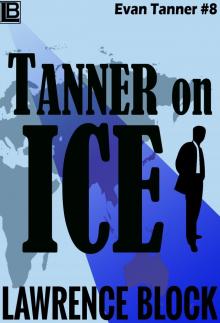 Tanner on Ice
Tanner on Ice Hit Me
Hit Me Hit and Run
Hit and Run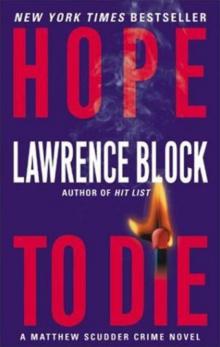 Hope to Die
Hope to Die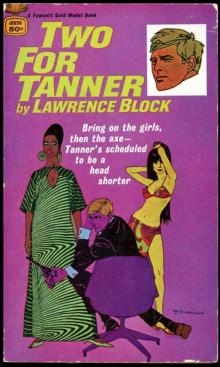 Two For Tanner
Two For Tanner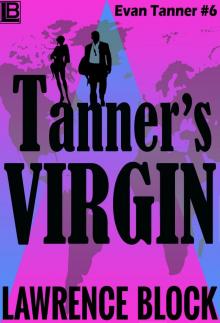 Tanners Virgin
Tanners Virgin Dead Girl Blues
Dead Girl Blues One Night Stands and Lost Weekends
One Night Stands and Lost Weekends A Drop of the Hard Stuff
A Drop of the Hard Stuff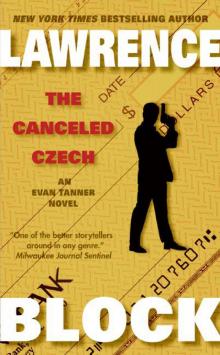 The Canceled Czech
The Canceled Czech Even the Wicked
Even the Wicked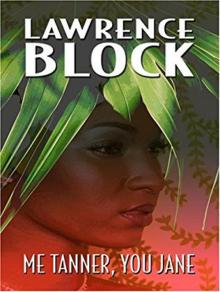 Me Tanner, You Jane
Me Tanner, You Jane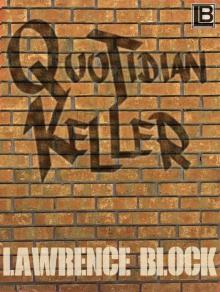 Quotidian Keller
Quotidian Keller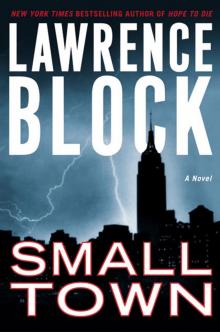 Small Town
Small Town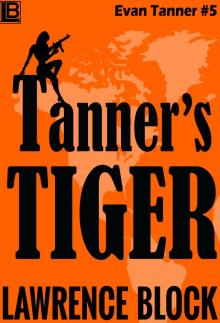 Tanners Tiger
Tanners Tiger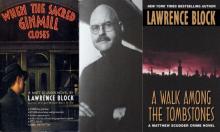 A Walk Among the Tombstones
A Walk Among the Tombstones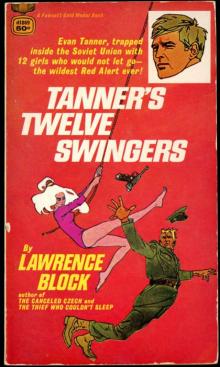 Tanners Twelve Swingers
Tanners Twelve Swingers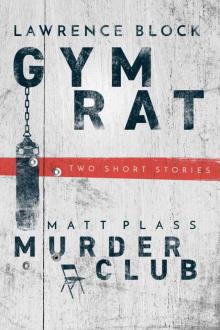 Gym Rat & the Murder Club
Gym Rat & the Murder Club Everybody Dies
Everybody Dies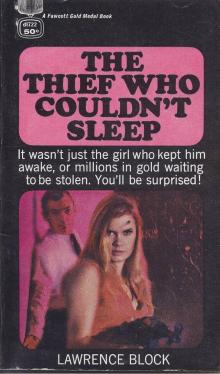 The Thief Who Couldnt Sleep
The Thief Who Couldnt Sleep Hit Parade
Hit Parade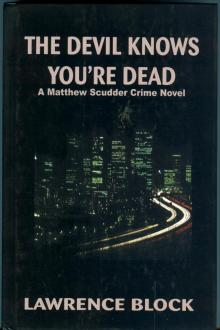 The Devil Knows Youre Dead
The Devil Knows Youre Dead The Burglar in Short Order
The Burglar in Short Order A Long Line of Dead Men
A Long Line of Dead Men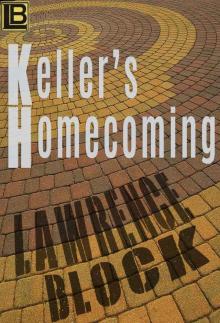 Keller's Homecoming
Keller's Homecoming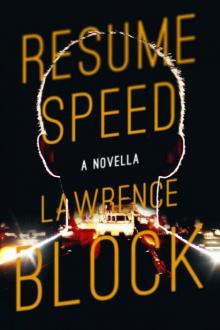 Resume Speed
Resume Speed Keller's Adjustment
Keller's Adjustment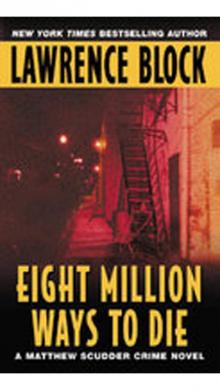 Eight Million Ways to Die
Eight Million Ways to Die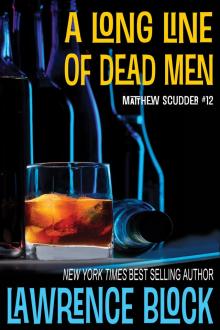 Time to Murder and Create
Time to Murder and Create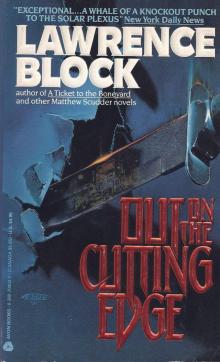 Out on the Cutting Edge
Out on the Cutting Edge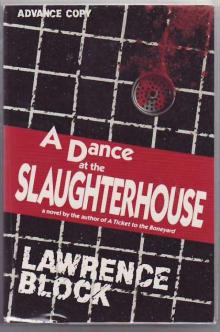 A Dance at the Slaughter House
A Dance at the Slaughter House In the Midst of Death
In the Midst of Death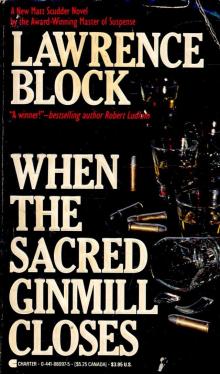 When the Sacred Ginmill Closes
When the Sacred Ginmill Closes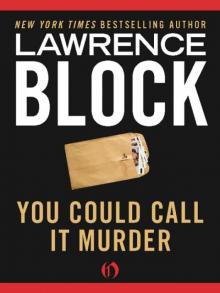 You Could Call It Murder
You Could Call It Murder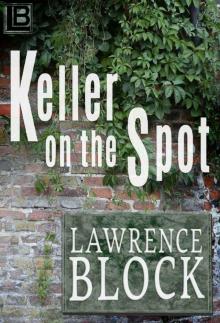 Keller on the Spot
Keller on the Spot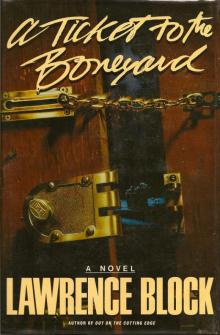 A Ticket to the Boneyard
A Ticket to the Boneyard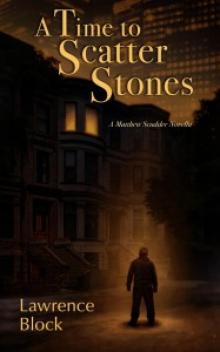 A Time to Scatter Stones
A Time to Scatter Stones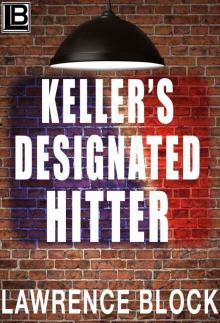 Keller's Designated Hitter
Keller's Designated Hitter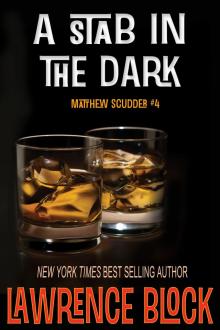 A Stab in the Dark
A Stab in the Dark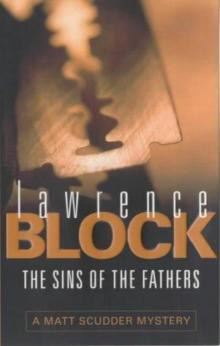 Sins of the Fathers
Sins of the Fathers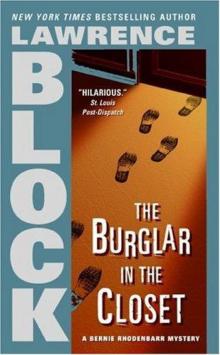 The Burglar in the Closet
The Burglar in the Closet Burglar Who Dropped In On Elvis
Burglar Who Dropped In On Elvis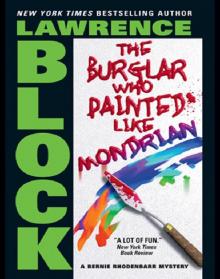 The Burglar Who Painted Like Mondrian
The Burglar Who Painted Like Mondrian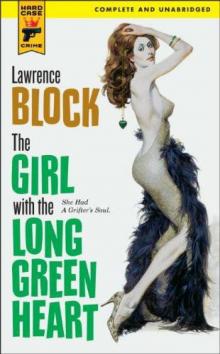 The Girl With the Long Green Heart
The Girl With the Long Green Heart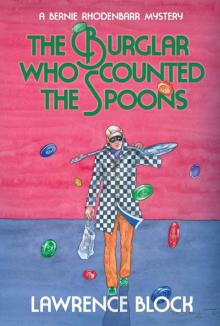 The Burglar Who Counted the Spoons (Bernie Rhodenbarr)
The Burglar Who Counted the Spoons (Bernie Rhodenbarr)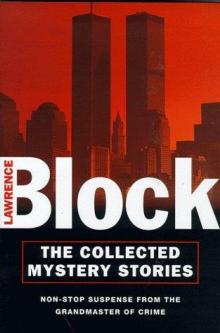 Burglar Who Smelled Smoke
Burglar Who Smelled Smoke Rude Awakening (Kit Tolliver #2) (The Kit Tolliver Stories)
Rude Awakening (Kit Tolliver #2) (The Kit Tolliver Stories)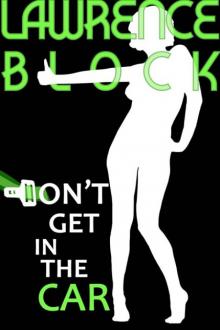 Don't Get in the Car (Kit Tolliver #9) (The Kit Tolliver Stories)
Don't Get in the Car (Kit Tolliver #9) (The Kit Tolliver Stories) CH04 - The Topless Tulip Caper
CH04 - The Topless Tulip Caper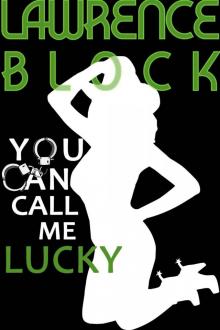 You Can Call Me Lucky (Kit Tolliver #3) (The Kit Tolliver Stories)
You Can Call Me Lucky (Kit Tolliver #3) (The Kit Tolliver Stories) CH02 - Chip Harrison Scores Again
CH02 - Chip Harrison Scores Again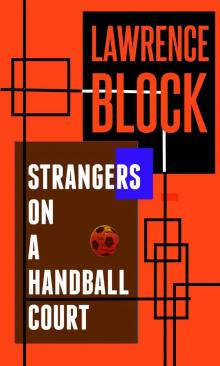 Strangers on a Handball Court
Strangers on a Handball Court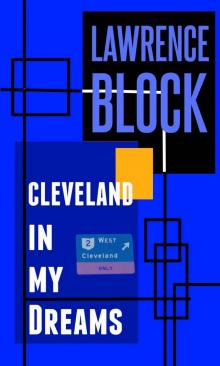 Cleveland in My Dreams
Cleveland in My Dreams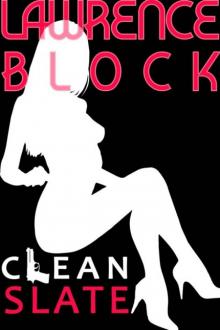 Clean Slate (Kit Tolliver #4) (The Kit Tolliver Stories)
Clean Slate (Kit Tolliver #4) (The Kit Tolliver Stories)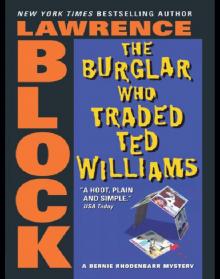 The Burglar Who Traded Ted Williams
The Burglar Who Traded Ted Williams Burglar on the Prowl
Burglar on the Prowl In For a Penny (A Story From the Dark Side)
In For a Penny (A Story From the Dark Side)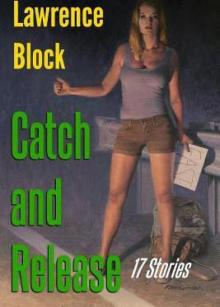 Catch and Release Paperback
Catch and Release Paperback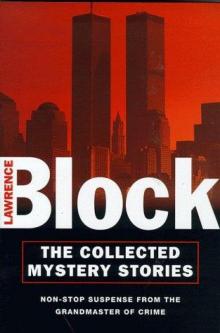 Ride A White Horse
Ride A White Horse No Score
No Score Looking for David (A Matthew Scudder Story Book 7)
Looking for David (A Matthew Scudder Story Book 7)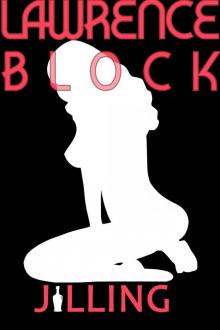 Jilling (Kit Tolliver #6) (The Kit Tolliver Stories)
Jilling (Kit Tolliver #6) (The Kit Tolliver Stories)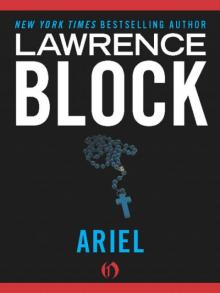 Ariel
Ariel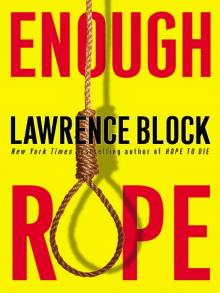 Enough Rope
Enough Rope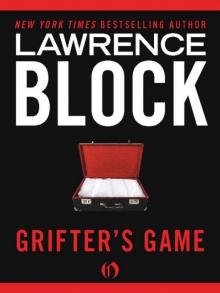 Grifter's Game
Grifter's Game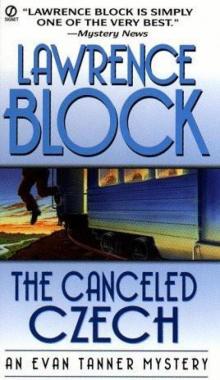 Canceled Czech
Canceled Czech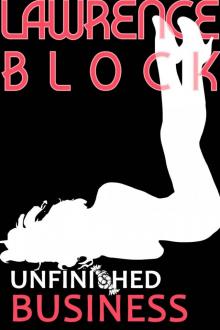 Unfinished Business (Kit Tolliver #12) (The Kit Tolliver Stories)
Unfinished Business (Kit Tolliver #12) (The Kit Tolliver Stories) Thirty
Thirty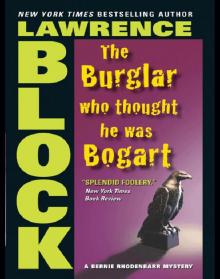 The Burglar Who Thought He Was Bogart
The Burglar Who Thought He Was Bogart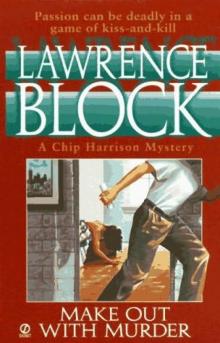 Make Out with Murder
Make Out with Murder One Last Night at Grogan's (A Matthew Scudder Story Book 11)
One Last Night at Grogan's (A Matthew Scudder Story Book 11) The Burglar on the Prowl
The Burglar on the Prowl Welcome to the Real World (A Story From the Dark Side)
Welcome to the Real World (A Story From the Dark Side)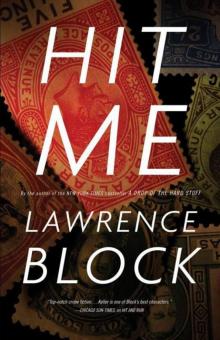 Keller 05 - Hit Me
Keller 05 - Hit Me Walk Among the Tombstones: A Matthew Scudder Crime Novel
Walk Among the Tombstones: A Matthew Scudder Crime Novel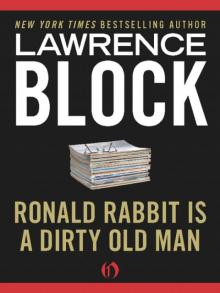 Ronald Rabbit Is a Dirty Old Man
Ronald Rabbit Is a Dirty Old Man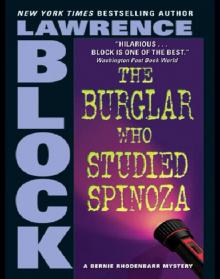 The Burglar Who Studied Spinoza
The Burglar Who Studied Spinoza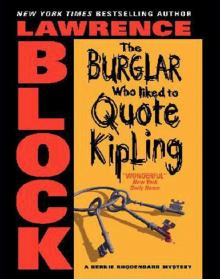 The Burglar Who Liked to Quote Kipling
The Burglar Who Liked to Quote Kipling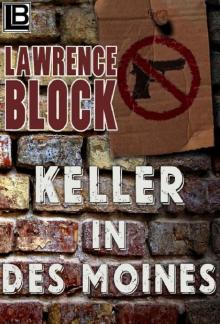 Keller in Des Moines
Keller in Des Moines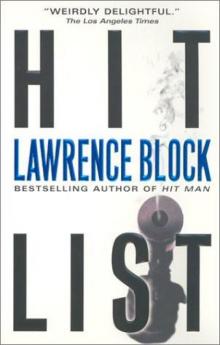 Hit List
Hit List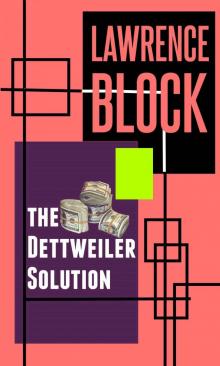 The Dettweiler Solution
The Dettweiler Solution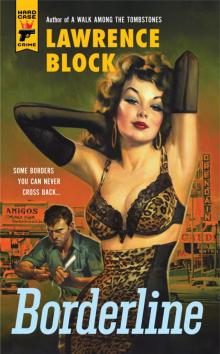 HCC 115 - Borderline
HCC 115 - Borderline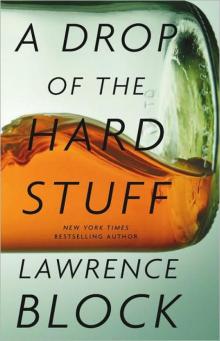 A Drop of the Hard Stuff: A Matthew Scudder Novel
A Drop of the Hard Stuff: A Matthew Scudder Novel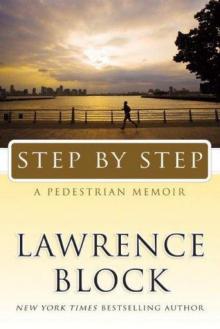 Step by Step
Step by Step The Girl With the Deep Blue Eyes
The Girl With the Deep Blue Eyes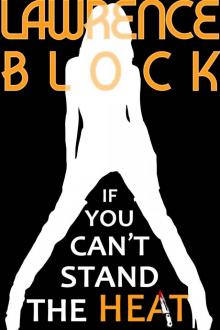 If You Can't Stand the Heat (Kit Tolliver #1) (The Kit Tolliver Stories)
If You Can't Stand the Heat (Kit Tolliver #1) (The Kit Tolliver Stories)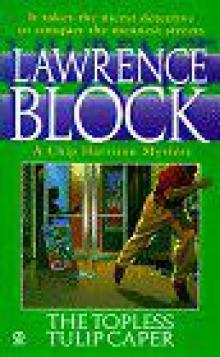 The Topless Tulip Caper
The Topless Tulip Caper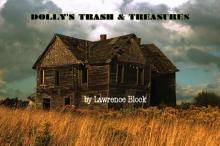 Dolly's Trash & Treasures (A Story From the Dark Side)
Dolly's Trash & Treasures (A Story From the Dark Side)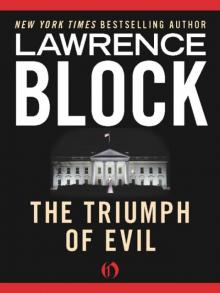 The Triumph of Evil
The Triumph of Evil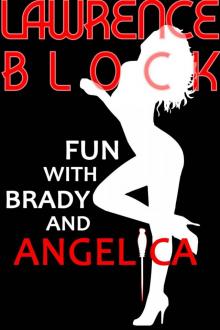 Fun with Brady and Angelica (Kit Tolliver #10 (The Kit Tolliver Stories)
Fun with Brady and Angelica (Kit Tolliver #10 (The Kit Tolliver Stories) Burglars Can't Be Choosers
Burglars Can't Be Choosers Who Knows Where It Goes (A Story From the Dark Side)
Who Knows Where It Goes (A Story From the Dark Side) Deadly Honeymoon
Deadly Honeymoon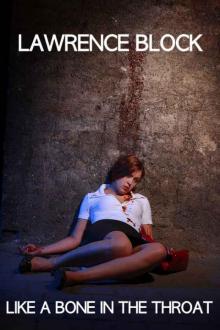 Like a Bone in the Throat (A Story From the Dark Side)
Like a Bone in the Throat (A Story From the Dark Side)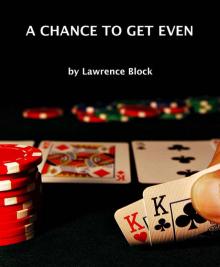 A Chance to Get Even (A Story From the Dark Side)
A Chance to Get Even (A Story From the Dark Side)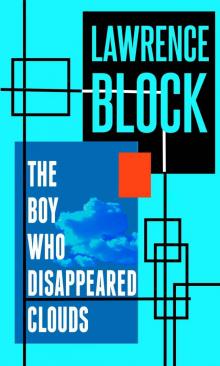 The Boy Who Disappeared Clouds
The Boy Who Disappeared Clouds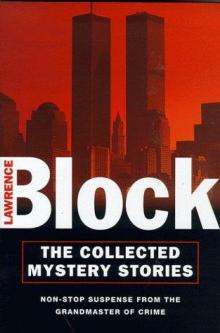 Collecting Ackermans
Collecting Ackermans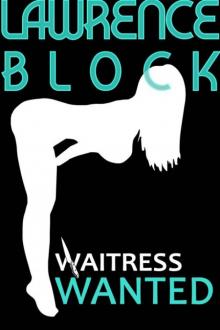 Waitress Wanted (Kit Tolliver #5) (The Kit Tolliver Stories)
Waitress Wanted (Kit Tolliver #5) (The Kit Tolliver Stories) One Thousand Dollars a Word
One Thousand Dollars a Word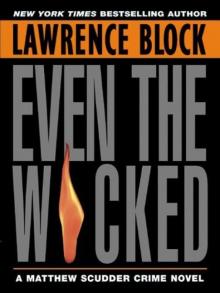 Even the Wicked: A Matthew Scudder Novel (Matthew Scudder Mysteries)
Even the Wicked: A Matthew Scudder Novel (Matthew Scudder Mysteries)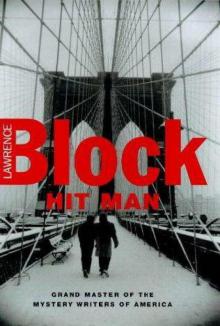 Hit Man
Hit Man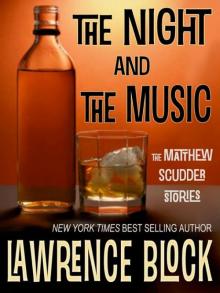 The Night and The Music
The Night and The Music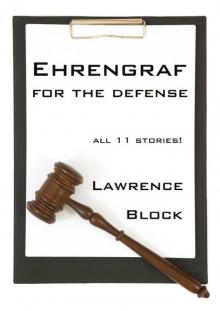 Ehrengraf for the Defense
Ehrengraf for the Defense The Merciful Angel of Death (A Matthew Scudder Story Book 5)
The Merciful Angel of Death (A Matthew Scudder Story Book 5) The Burglar in the Rye
The Burglar in the Rye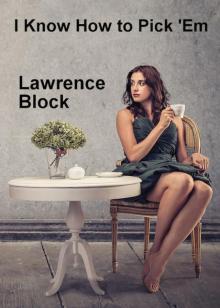 I Know How to Pick 'Em
I Know How to Pick 'Em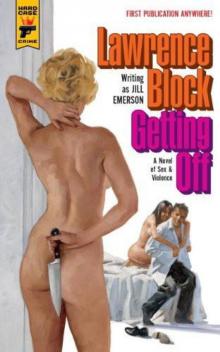 Getting Off hcc-69
Getting Off hcc-69 Three in the Side Pocket (A Story From the Dark Side)
Three in the Side Pocket (A Story From the Dark Side)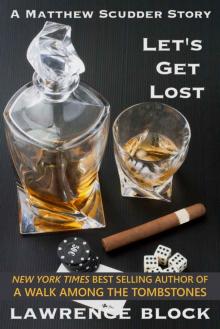 Let's Get Lost (A Matthew Scudder Story Book 8)
Let's Get Lost (A Matthew Scudder Story Book 8)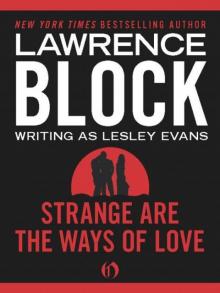 Strange Are the Ways of Love
Strange Are the Ways of Love MOSTLY MURDER: Till Death: a mystery anthology
MOSTLY MURDER: Till Death: a mystery anthology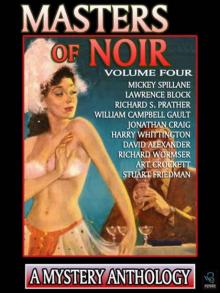 Masters of Noir: Volume Four
Masters of Noir: Volume Four A Week as Andrea Benstock
A Week as Andrea Benstock Scenarios (A Stoiry From the Dark Side)
Scenarios (A Stoiry From the Dark Side)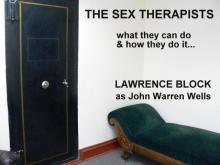 The Sex Therapists: What They Can Do and How They Do It (John Warren Wells on Sexual Behavior Book 15)
The Sex Therapists: What They Can Do and How They Do It (John Warren Wells on Sexual Behavior Book 15)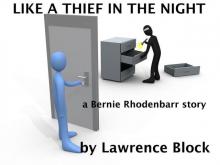 Like a Thief in the Night: a Bernie Rhodenbarr story
Like a Thief in the Night: a Bernie Rhodenbarr story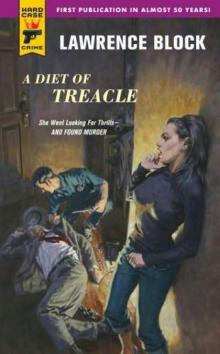 A Diet of Treacle
A Diet of Treacle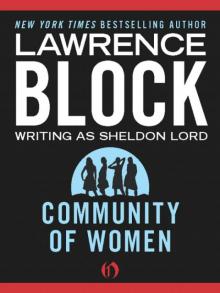 Community of Women
Community of Women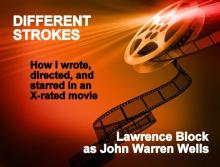 Different Strokes: How I (Gulp!) Wrote, Directed, and Starred in an X-rated Movie (John Warren Wells on Sexual Behavior)
Different Strokes: How I (Gulp!) Wrote, Directed, and Starred in an X-rated Movie (John Warren Wells on Sexual Behavior)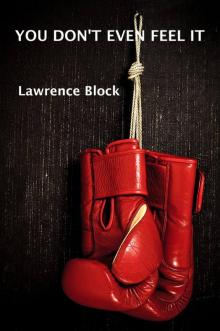 You Don't Even Feel It (A Story From the Dark Side)
You Don't Even Feel It (A Story From the Dark Side)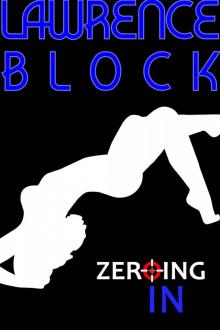 Zeroing In (Kit Tolliver #11) (The Kit Tolliver Stories)
Zeroing In (Kit Tolliver #11) (The Kit Tolliver Stories) The Wife-Swap Report (John Warren Wells on Sexual Behavior)
The Wife-Swap Report (John Warren Wells on Sexual Behavior)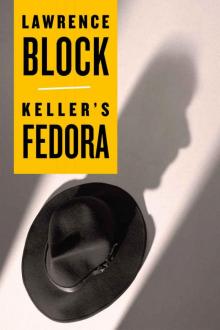 Keller's Fedora (Kindle Single)
Keller's Fedora (Kindle Single) Speaking of Lust
Speaking of Lust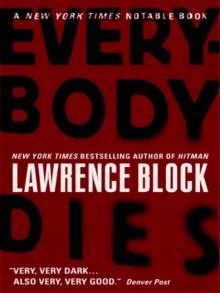 Everybody Dies (Matthew Scudder)
Everybody Dies (Matthew Scudder)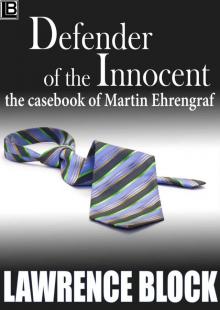 Defender of the Innocent: The Casebook of Martin Ehrengraf
Defender of the Innocent: The Casebook of Martin Ehrengraf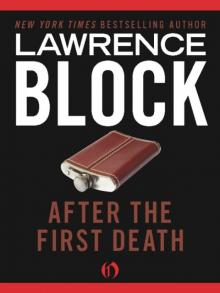 After the First Death
After the First Death Writing the Novel
Writing the Novel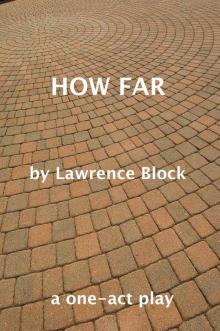 How Far - a one-act stage play
How Far - a one-act stage play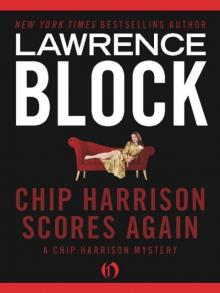 Chip Harrison Scores Again
Chip Harrison Scores Again The Topless Tulip Caper ch-4
The Topless Tulip Caper ch-4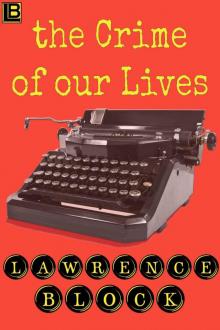 The Crime of Our Lives
The Crime of Our Lives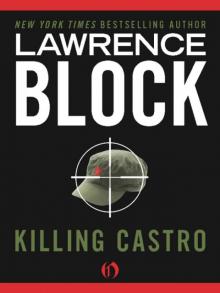 Killing Castro
Killing Castro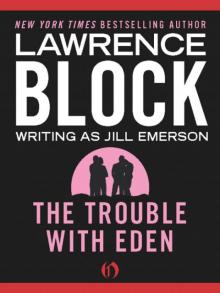 The Trouble with Eden
The Trouble with Eden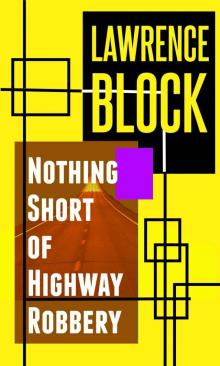 Nothing Short of Highway Robbery
Nothing Short of Highway Robbery Sin Hellcat
Sin Hellcat Getting Off: A Novel of Sex & Violence (Hard Case Crime)
Getting Off: A Novel of Sex & Violence (Hard Case Crime) Coward's Kiss
Coward's Kiss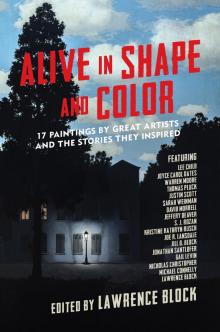 Alive in Shape and Color
Alive in Shape and Color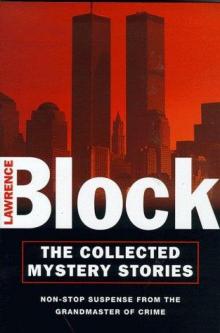 Blow for Freedom
Blow for Freedom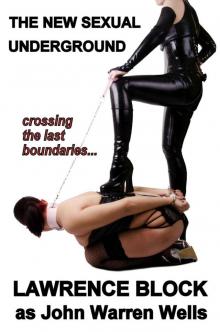 The New Sexual Underground: Crossing the Last Boundaries (John Warren Wells on Sexual Behavior Book 10)
The New Sexual Underground: Crossing the Last Boundaries (John Warren Wells on Sexual Behavior Book 10)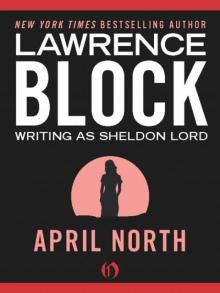 April North
April North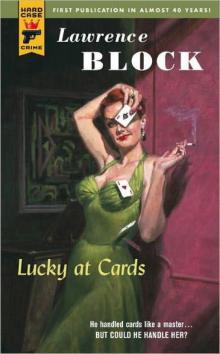 Lucky at Cards
Lucky at Cards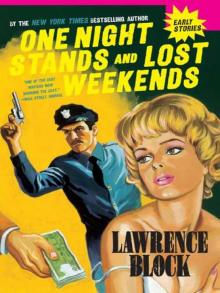 One Night Stands; Lost weekends
One Night Stands; Lost weekends Sweet Little Hands (A Story From the Dark Side)
Sweet Little Hands (A Story From the Dark Side)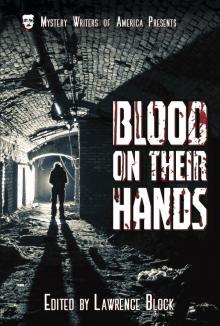 Blood on Their Hands
Blood on Their Hands A Dance at the Slaughterhouse
A Dance at the Slaughterhouse Headaches and Bad Dreams (A Story From the Dark Side)
Headaches and Bad Dreams (A Story From the Dark Side) Keller's Therapy
Keller's Therapy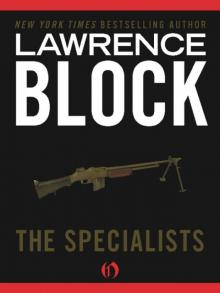 The Specialists
The Specialists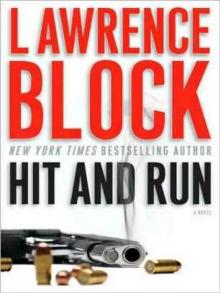 Hit and Run jk-4
Hit and Run jk-4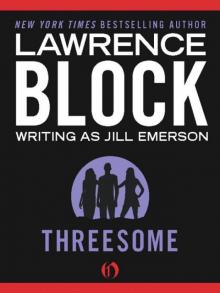 Threesome
Threesome Love at a Tender Age (John Warren Wells on Sexual Behavior)
Love at a Tender Age (John Warren Wells on Sexual Behavior)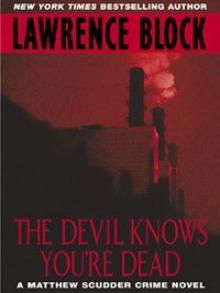 The Devil Knows You're Dead: A MATTHEW SCUDDER CRIME NOVEL
The Devil Knows You're Dead: A MATTHEW SCUDDER CRIME NOVEL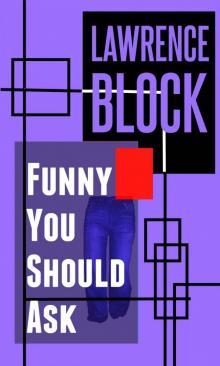 Funny You Should Ask
Funny You Should Ask CH01 - No Score
CH01 - No Score Sex and the Stewardess (John Warren Wells on Sexual Behavior)
Sex and the Stewardess (John Warren Wells on Sexual Behavior)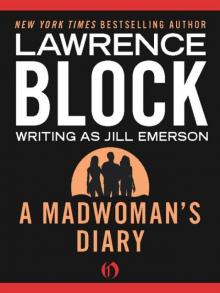 A Madwoman's Diary
A Madwoman's Diary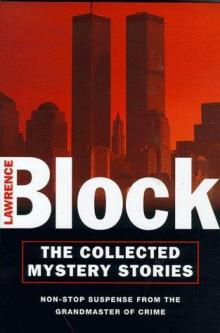 When This Man Dies
When This Man Dies Sinner Man
Sinner Man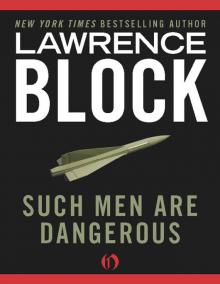 Such Men Are Dangerous
Such Men Are Dangerous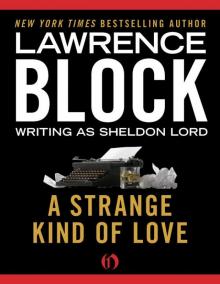 A Strange Kind of Love
A Strange Kind of Love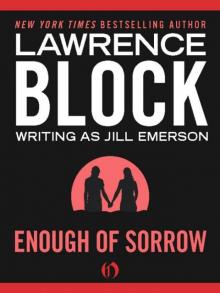 Enough of Sorrow
Enough of Sorrow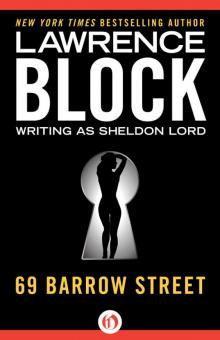 69 Barrow Street
69 Barrow Street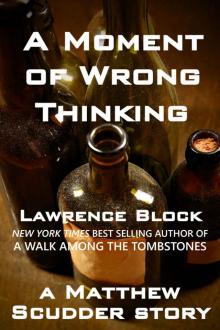 A Moment of Wrong Thinking (Matthew Scudder Mysteries Series Book 9)
A Moment of Wrong Thinking (Matthew Scudder Mysteries Series Book 9)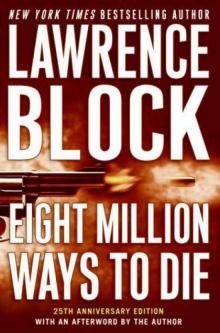 Eight Million Ways to Die ms-5
Eight Million Ways to Die ms-5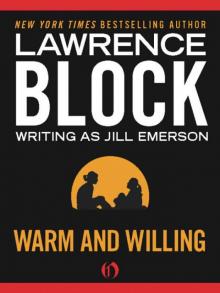 Warm and Willing
Warm and Willing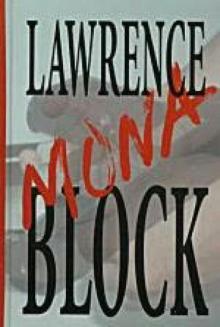 Mona
Mona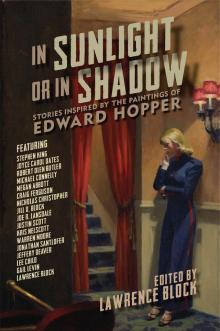 In Sunlight or In Shadow
In Sunlight or In Shadow A Candle for the Bag Lady (Matthew Scudder Book 2)
A Candle for the Bag Lady (Matthew Scudder Book 2)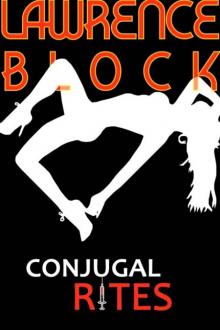 Conjugal Rites (Kit Tolliver #7) (The Kit Tolliver Stories)
Conjugal Rites (Kit Tolliver #7) (The Kit Tolliver Stories) Speaking of Lust - the novella
Speaking of Lust - the novella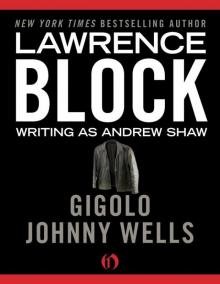 Gigolo Johnny Wells
Gigolo Johnny Wells Dark City Lights
Dark City Lights Versatile Ladies: the bisexual option (John Warren Wells on Sexual Behavior)
Versatile Ladies: the bisexual option (John Warren Wells on Sexual Behavior)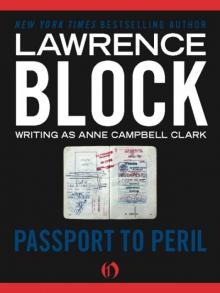 Passport to Peril
Passport to Peril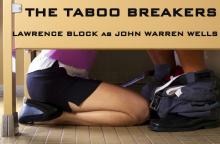 The Taboo Breakers: Shock Troops of the Sexual Revolution (John Warren Wells on Sexual Behavior)
The Taboo Breakers: Shock Troops of the Sexual Revolution (John Warren Wells on Sexual Behavior)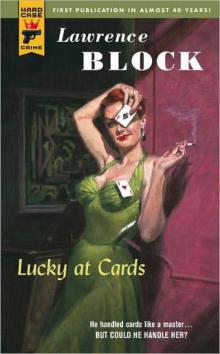 Lucky at Cards hcc-28
Lucky at Cards hcc-28 Campus Tramp
Campus Tramp 3 is Not a Crowd (John Warren Wells on Sexual Behavior)
3 is Not a Crowd (John Warren Wells on Sexual Behavior)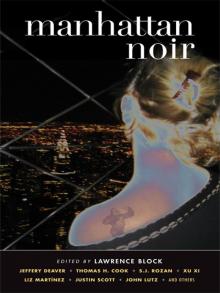 Manhattan Noir
Manhattan Noir The Burglar in the Library
The Burglar in the Library Doing It! - Going Beyond the Sexual Revolution (John Warren Wells on Sexual Behavior Book 13)
Doing It! - Going Beyond the Sexual Revolution (John Warren Wells on Sexual Behavior Book 13)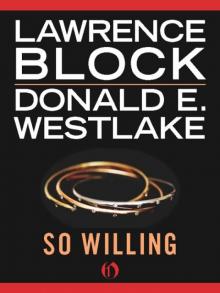 So Willing
So Willing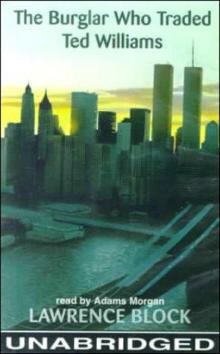 The Burglar Who Traded Ted Williams br-6
The Burglar Who Traded Ted Williams br-6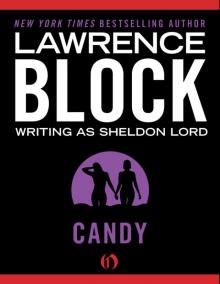 Candy
Candy Sex Without Strings: A Handbook for Consenting Adults (John Warren Wells on Sexual Behavior)
Sex Without Strings: A Handbook for Consenting Adults (John Warren Wells on Sexual Behavior)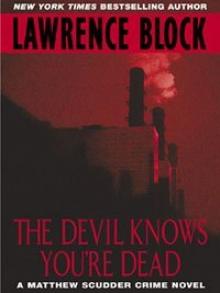 The Devil Knows You're Dead: A MATTHEW SCUDDER CRIME NOVEL (Matthew Scudder Mysteries)
The Devil Knows You're Dead: A MATTHEW SCUDDER CRIME NOVEL (Matthew Scudder Mysteries)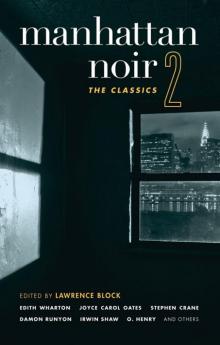 Manhattan Noir 2
Manhattan Noir 2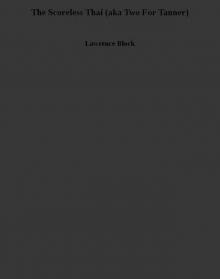 The Scoreless Thai (aka Two For Tanner)
The Scoreless Thai (aka Two For Tanner)